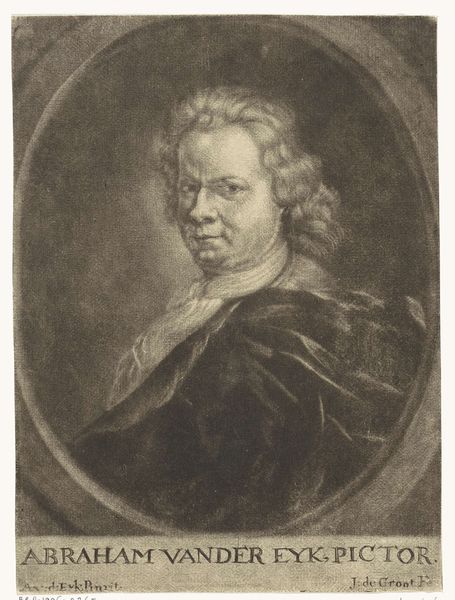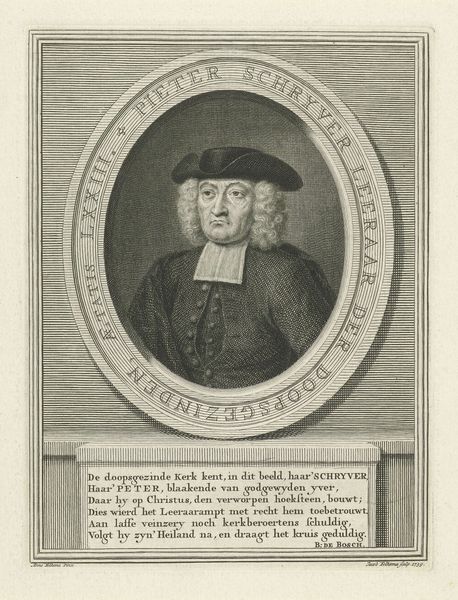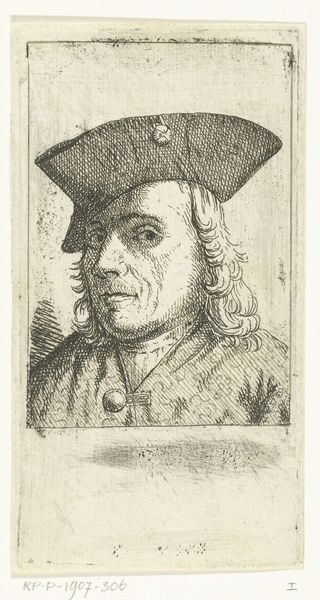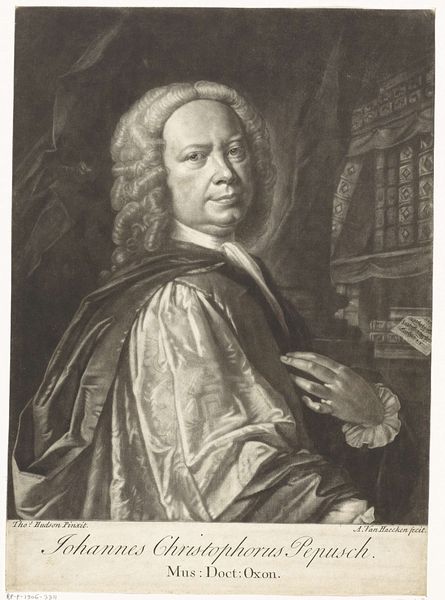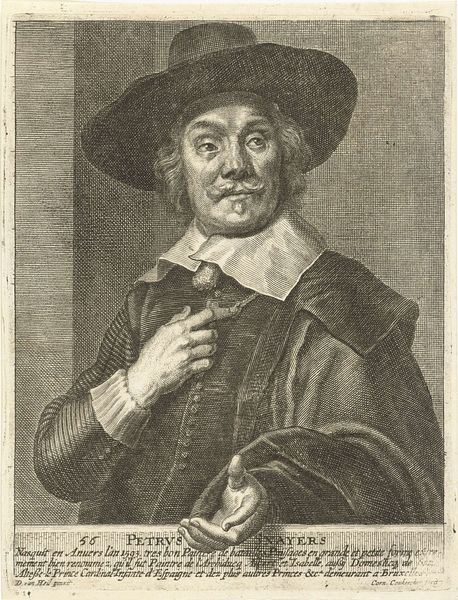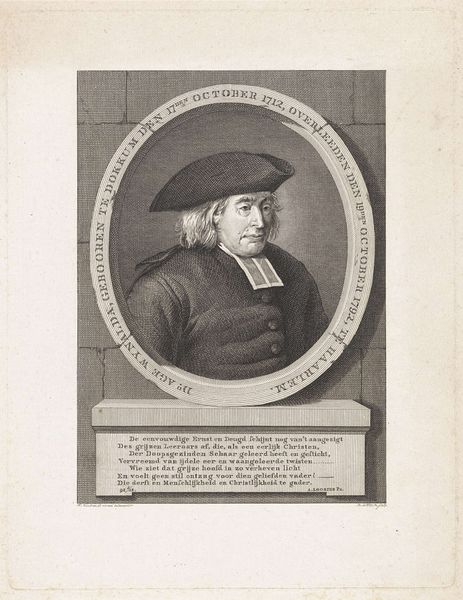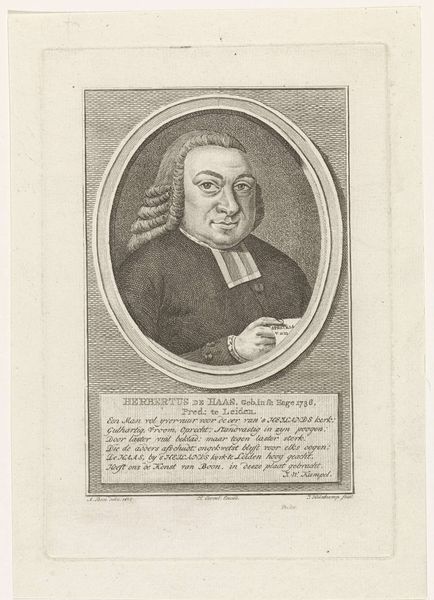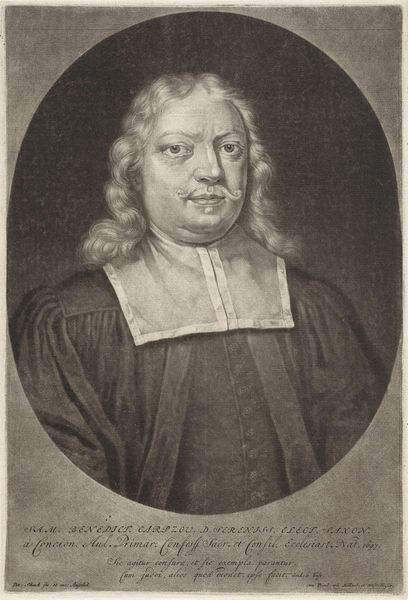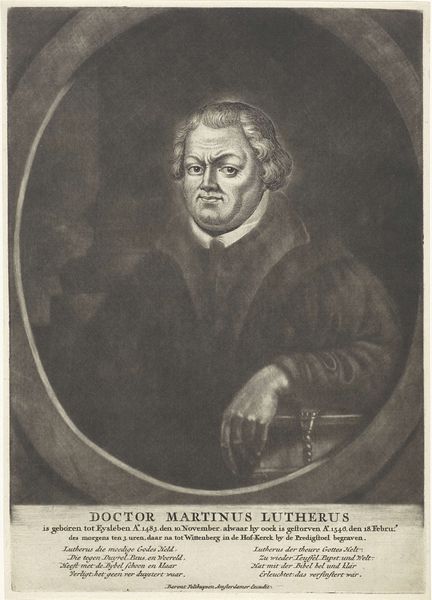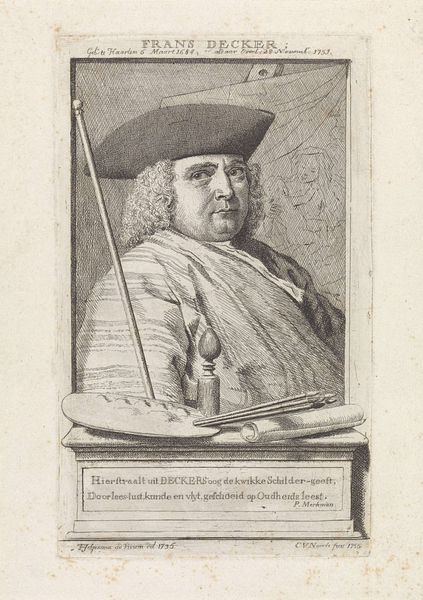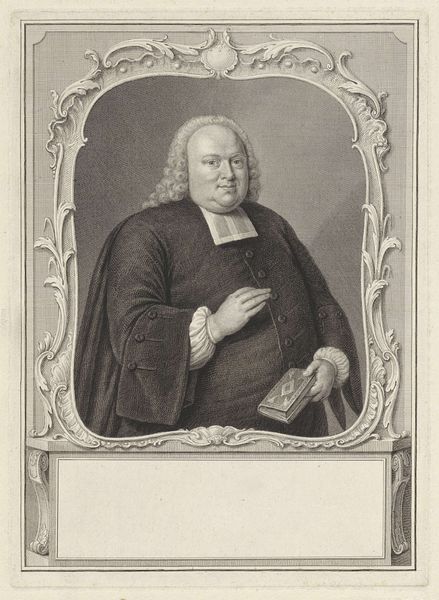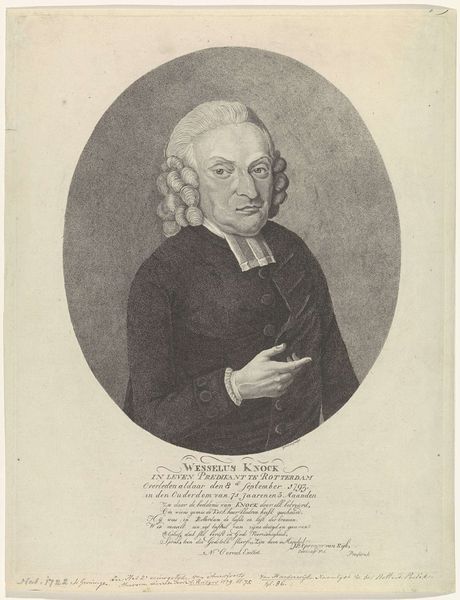
print, engraving
#
portrait
#
neoclacissism
# print
#
old engraving style
#
15_18th-century
#
line
#
portrait drawing
#
engraving
Dimensions: height 88 mm, width 75 mm
Copyright: Rijks Museum: Open Domain
Curator: Here we have "Portret van Herman van Swanevelt" by Ernst Willem Jan Bagelaar, likely made between 1798 and 1837. It’s an engraving. What are your initial impressions? Editor: Austere. The lines are very clean, economical even. You get a real sense of the materiality of the etching process; every little stroke visible in his coat and hat. Curator: Indeed, this piece is firmly rooted in the Neoclassical style. Note the sitter’s direct gaze and the almost complete absence of decorative elements. This reflects a broader Enlightenment emphasis on reason and order, moving away from the Rococo’s extravagance and artifice. It represents an individual—his labor—reduced to a series of precisely rendered marks. Editor: The use of engraving, though, seems deliberate, echoing the visual language of scientific illustration popular at the time. There is a scientific impulse behind the rendering. How the material shapes its reception. The textures he creates are wonderful to behold. Curator: Exactly. Swanevelt, here, is not presented as a person, but as a subject, objectified to project rationality. Think about the context—the social and political upheaval of the late 18th and early 19th centuries—and consider whether the aesthetic order is attempting to reconcile sociopolitical order. This image can also speak about labor conditions of early printmakers and challenges associated with the industrial reproduction of images. Editor: Agreed. It is difficult to produce, though this allows its dissemination among larger swaths of people. And the small details are quite fascinating in person. This image can also serve to speak about labor and gender since engraving was seen as craftwork fit for women's practices. Curator: This piece certainly raises interesting questions about who is considered important, about how we represent historical figures, and about what kinds of labor and under what conditions it exists. Editor: The image's formal qualities, particularly the engraving technique, bring forth discussions about its sociohistorical conditions of artistic production and labor.
Comments
No comments
Be the first to comment and join the conversation on the ultimate creative platform.

